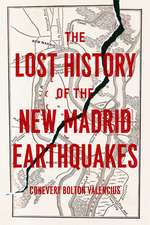Landscapes and Labscapes: Exploring the Lab-Field Border in Biology
Autor Robert E. Kohleren Limba Engleză Paperback – 7 iul 2003
What is it like to do field biology in a world that exalts experiments and laboratories? How have field biologists assimilated laboratory values and practices, and crafted an exact, quantitative science without losing their naturalist souls?
In Landscapes and Labscapes, Robert E. Kohler explores the people, places, and practices of field biology in the United States from the 1890s to the 1950s. He takes readers into the fields and forests where field biologists learned to count and measure nature and to read the imperfect records of "nature's experiments." He shows how field researchers use nature's particularities to develop "practices of place" that achieve in nature what laboratory researchers can only do with simplified experiments. Using historical frontiers as models, Kohler shows how biologists created vigorous new border sciences of ecology and evolutionary biology.
In Landscapes and Labscapes, Robert E. Kohler explores the people, places, and practices of field biology in the United States from the 1890s to the 1950s. He takes readers into the fields and forests where field biologists learned to count and measure nature and to read the imperfect records of "nature's experiments." He shows how field researchers use nature's particularities to develop "practices of place" that achieve in nature what laboratory researchers can only do with simplified experiments. Using historical frontiers as models, Kohler shows how biologists created vigorous new border sciences of ecology and evolutionary biology.
Preț: 251.29 lei
Nou
Puncte Express: 377
Preț estimativ în valută:
48.09€ • 49.92$ • 40.10£
48.09€ • 49.92$ • 40.10£
Carte disponibilă
Livrare economică 04-18 martie
Livrare express 15-21 februarie pentru 33.03 lei
Preluare comenzi: 021 569.72.76
Specificații
ISBN-13: 9780226450100
ISBN-10: 0226450104
Pagini: 341
Ilustrații: 39 halftones, 22 line drawings
Dimensiuni: 152 x 229 x 25 mm
Greutate: 0.46 kg
Ediția:1
Editura: University of Chicago Press
Colecția University of Chicago Press
ISBN-10: 0226450104
Pagini: 341
Ilustrații: 39 halftones, 22 line drawings
Dimensiuni: 152 x 229 x 25 mm
Greutate: 0.46 kg
Ediția:1
Editura: University of Chicago Press
Colecția University of Chicago Press
Notă biografică
Robert E. Kohler is a professor of the history and sociology of science at the University of Pennsylvania. He is the author of Lords of the Fly: Drosophila Genetics and the Experimental Life, published by the University of Chicago Press.
Cuprins
List of Illustrations
Preface
Chapter 1 Borders and History
Field and Lab in Biology
Lab and Field as Place
Borders and Frontiers
An Overview, with Caveats
Chapter 2 A New Natural History
The New Natural History
New Naturalists and Educational Reform
Labscapes: Marine Stations and Biological Farms
Labscapes: Vivaria and Field Stations
Conclusion
Chapter 3 Border Crossings
The Rise and Decline of Biometry
Ecology: Physiology or Natural History?
Up "Brush Creek" and Back Again
Guardians of the Faith: Genetics and Physiology
Conclusion
Chapter 4 Taking Nature's Measure
Trust in Numbers: Quadrates
Taking Nature's Measure: Instruments
Plant-Machine: Atmometers and Phytometers
Instrumental Eye: The Camera
Making the Place Right: Forrest Shreve
Conclusion
Chapter 5 Experiments in Nature
Experimental Evolution
Shifting Ground: Field and Lab
Experiments in Nature: Ecology
Experimental Taxonomy: Harvey M. Hall and Jens Clausen
Conclusion
Chapter 6 Troubled Lives
Midlife Crises: Ecology
Ends and Means: Experimental Evolution
Identity
Genetics, True and False
Physiologists and the Field
Conclusion
Chapter 7 Nature's Experiments
Nature's Experiments
Places in Process
Reading Places
Physiographic Ecology
Panoramas
Evolution
Conclusion
Chapter 8 Border Practices
Geographical Speciation: Ernst Mayr
Hybrid Integration: Edgar Anderson
Ecosystem Ecology: Raymond Lindeman
Gradients and Continua: Robert Whittaker
Conclusion
Chapter 9 Border Biology: A Transect
The Border Zone: A Bird's-Eye View
Conclusion
Abbreviations
Bibliography
Index
Preface
Chapter 1 Borders and History
Field and Lab in Biology
Lab and Field as Place
Borders and Frontiers
An Overview, with Caveats
Chapter 2 A New Natural History
The New Natural History
New Naturalists and Educational Reform
Labscapes: Marine Stations and Biological Farms
Labscapes: Vivaria and Field Stations
Conclusion
Chapter 3 Border Crossings
The Rise and Decline of Biometry
Ecology: Physiology or Natural History?
Up "Brush Creek" and Back Again
Guardians of the Faith: Genetics and Physiology
Conclusion
Chapter 4 Taking Nature's Measure
Trust in Numbers: Quadrates
Taking Nature's Measure: Instruments
Plant-Machine: Atmometers and Phytometers
Instrumental Eye: The Camera
Making the Place Right: Forrest Shreve
Conclusion
Chapter 5 Experiments in Nature
Experimental Evolution
Shifting Ground: Field and Lab
Experiments in Nature: Ecology
Experimental Taxonomy: Harvey M. Hall and Jens Clausen
Conclusion
Chapter 6 Troubled Lives
Midlife Crises: Ecology
Ends and Means: Experimental Evolution
Identity
Genetics, True and False
Physiologists and the Field
Conclusion
Chapter 7 Nature's Experiments
Nature's Experiments
Places in Process
Reading Places
Physiographic Ecology
Panoramas
Evolution
Conclusion
Chapter 8 Border Practices
Geographical Speciation: Ernst Mayr
Hybrid Integration: Edgar Anderson
Ecosystem Ecology: Raymond Lindeman
Gradients and Continua: Robert Whittaker
Conclusion
Chapter 9 Border Biology: A Transect
The Border Zone: A Bird's-Eye View
Conclusion
Abbreviations
Bibliography
Index













